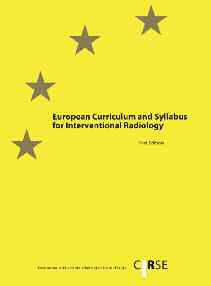HealthManagement, Volume 13 - Issue 1, 2013
Interventional radiology (IR) is steadily on the rise as the discipline
of choice to treat a vast array of medical conditions – be they vascular,
non-vascular, oncological or neurological. When compared with open surgery, the
shorter hospital stays, quicker recovery periods and the minimally invasive
nature of these image-guided interventions speak for themselves.
Widespread availability and acceptance amongst patients contribute to the increasing demand for these procedures, and consequently for skilled doctors to perform them. To respond to these trends and avoid facing a shortage of well-trained IR doctors, training pathways need to be reconsidered and harmonised throughout Europe. IR’s position as a subspecialty of diagnostic radiology accounts for country specific training pathways and differing perceptions of what knowledge and technical skills ought to be acquired by a professional interventional radiologist. Compounding this, radiology training at both undergraduate and resident level still has a disproportionate focus on diagnostic radiology.

To start redressing this imbalance, the Cardiovascular and Interventional Radiological Society of Europe (CIRSE) is putting strong emphasis on IR education. In 2012, a curriculum for undergraduate medical students was published on the society’s website. Aiming to impart a solid understanding of IR and make medical students aware of this career option, this concise document concentrates on the crucial learning outcomes required for their residency years and subsequent IR training.
A common European curriculum and syllabus for interventional radiology is much needed and will be available soon, thanks to the voluntary work of Prof. Anna-Maria Belli and her task force. Together, the group of renowned interventional radiologists revised and updated the former syllabus to reflect current practice and incorporate developments and new procedures. A curriculum has been established for the first time and together, these comprehensive documents form the basis of the European Board of Interventional Radiology (EBIR).

Professor Anna-Maria Belli, EBIR
“It is important to develop an IR curriculum to ensure that
every trainee is trained to a set standard and assessed
before they are accredited as specialists. This is particularly important
when interventional radiologists cross European borders, and a set curriculum
offers a means of ensuring quality control and competency,” says Anna-Maria
Belli. She considers a common European curriculum essential to ensure that
doctors practise safely and effectively regardless of the country in which they
have received training.
Patient safety is key and has constantly been on the mind of the experts who have thoroughly edited the document. Patients deserve exemplary treatment, and to this end the curriculum makes the trainee aware of the safety concepts that a well-trained interventional radiologist must be familiar with, such as the ALARA (As Low As Reasonably Achievable) principle, effective and safe exposure to ionising radiation, knowledge of hazardous materials and patient safety checklists.
There is also a pan-European aspect to CIRSE’s approach. Alongside high standards of medical professional qualifications, EU directives also aim to promote the free movement of doctors and patients throughout the European Union. But within IR, this goal is currently hampered by the prevailing dissimilarity of IR training pathways. A standardised curriculum and a centralised assessment would improve the situation substantially.
The European Curriculum and Syllabus for Interventional Radiology and the European Board of Interventional Radiology (EBIR) provide just that. Since 2010, a tailor-made exam consisting of written and oral components has allowed interventional radiologists from all over Europe to demonstrate their knowledge to the EBIR Examination Council. Trained examiners and state-of-the-art assessment techniques guarantee objectivity and fair results. On passing the EBIR, the candidate acquires a widely recognised qualification demonstrating their skills and expertise in IR.
The authors of the curriculum also point to the necessity of appropriate IR training institutions that meet certain basic standards and guarantee trainees sufficient exposure to the procedures described in the syllabus. They hope that in the future, an accrediting body for IR training will be instituted to assess IR training centres.
Since interventional radiology is a dynamic and rapidly developing specialty, this curriculum will be subject to continuous review. Based on regular surveys on the effects of its implementation, a dedicated task force will revise the contents of the curriculum every five years.

Professor Michael J. Lee,
Professor Michael Lee , current CIRSE President and member of the IR Curriculum Task Force, is confident that, with the upcoming publication of the European Curriculum and Syllabus for Interventional Radiology, “harmonisation of training and accreditation throughout Europe is not just a vision anymore, but may soon become reality, which can only have positive effects for patients”.
For more information, please refer to www.cirse.org.
Maria Zoidl is member of Cardiovascular and Interventional Radiological Society of Europe Vienna, Austria






